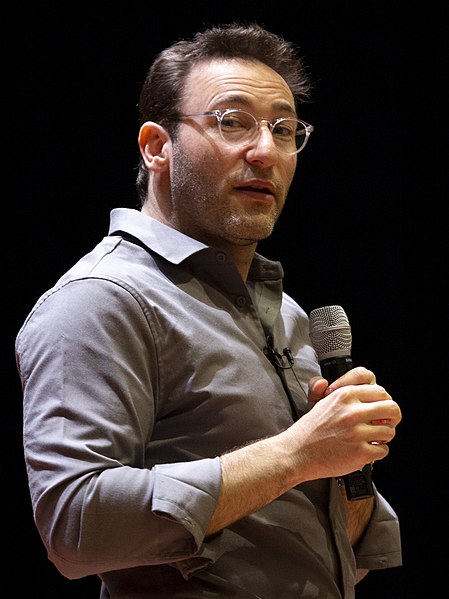Mastering the Art of Decision Making and Problem Solving: The Key to High-Performance Leadership
The Importance of Decision Making and Problem Solving in High-Performance Leadership
Decision making and problem solving are essential skills for any leader looking to achieve high performance. The ability to make sound decisions and effectively solve problems is vital for achieving organizational goals, managing resources effectively, and leading a team to success. In this article, we will explore the importance of decision making and problem solving in high-performance leadership and provide strategies for developing these skills.
Definition of decision making and problem solving
Decision making is the process of selecting one course of action from a set of alternatives. It is an integral part of leadership, as leaders are often required to make decisions that will affect the direction and success of their organization. Decision making can range from small, routine decisions to large, complex ones that have significant consequences.
Problem solving, on the other hand, is the process of identifying and resolving issues or obstacles that stand in the way of achieving goals. Effective problem solving requires a leader to understand the root cause of a problem, gather and analyze data, and develop and implement a solution.
Importance of decision making and problem solving in leadership
Effective decision making and problem solving are critical to the success of any leader. Leaders who are able to make sound decisions and effectively solve problems are better able to achieve organizational goals, manage resources effectively, and lead their teams to success. Decision making and problem solving also play a crucial role in managing change and adapting to new situations.
Decision making is essential for leaders to make strategic, tactical and operational decisions that would affect the overall direction of the organization. Problem solving allows leaders to identify and resolve issues that impede progress and stands as a barrier for achieving goals.
The purpose of this article is to explore the importance of decision making and problem solving in high-performance leadership and provide strategies for developing these skills. We will examine the role of decision making and problem solving in leadership, the factors that influence these processes, and strategies for effective decision making and problem solving. Additionally, we will discuss how decision making and problem solving contribute to high-performance leadership and provide examples of leaders who excel in these areas. The goal of this article is to provide readers with the knowledge and tools necessary to develop their decision making and problem solving skills and become a more effective leader.
The Role of Decision Making in Leadership
Types of decisions leaders make
Strategic decisions: Strategic decisions are high-level decisions that shape the direction and long-term success of an organization. These decisions often involve significant resources and have long-term consequences. Examples of strategic decisions include developing a new product line, expanding into a new market, or acquiring another company.
Tactical decisions: Tactical decisions are medium-level decisions that support the implementation of strategic decisions. These decisions often involve the allocation of resources and have medium-term consequences. Examples of tactical decisions include selecting a new marketing campaign, allocating budget for a department, or hiring new employees.
Operational decisions: Operational decisions are low-level decisions that support the day-to-day operation of an organization. These decisions often involve the allocation of resources and have short-term consequences. Examples of operational decisions include scheduling employee shifts, ordering office supplies, or approving a purchase order.
Factors that influence decision making in leadership
Organizational culture: The culture of an organization can greatly influence the decision making process. In some organizations, decisions are made quickly and with minimal input from others, while in others, decisions are made through a more collaborative process.
Time constraints: The amount of time available to make a decision can also influence the decision making process. In some situations, leaders may have to make quick decisions with limited information, while in others, they may have the luxury of more time to gather information and consider options.
Resources available: The resources available to a leader can also influence the decision making process. Leaders with access to more resources, such as financial resources, personnel, and technology, may have more options to consider when making decisions.
Strategies for effective decision making in leadership
Gather and analyze data: Leaders should gather and analyze data to inform their decisions. This includes gathering information on the problem or situation, the options available, and the potential consequences of each option.
Seek input from others: Leaders should seek input from others, including team members, experts in the field, and stakeholders. This will provide multiple perspectives and can help identify potential issues or opportunities that may not have been considered.
Consider the potential consequences: Leaders should consider the potential consequences of each option and weigh the potential benefits against the potential risks.
Make a decision and take action: Once a decision has been made, leaders should take action to implement it. This includes communicating the decision to the appropriate parties and providing the necessary resources and support for its implementation.
Leaders are constantly required to make decisions that would affect the direction and success of their organization. The ability to make sound decisions, considering the different types of decisions, the factors that influence it and the strategies to make effective decisions, is a crucial leadership skill. Effective decision making is essential for leaders to make strategic, tactical and operational decisions that would affect the overall direction of the organization.
The Role of Problem Solving in Leadership
Types of problems leaders face
Complex problems: Complex problems are often multi-faceted and may have multiple causes. These problems can be difficult to understand and may require a significant amount of time and resources to solve. Examples of complex problems include managing a crisis, improving organizational performance, or reducing employee turnover.
Ambiguous problems: Ambiguous problems are those that are not clearly defined and may have multiple potential solutions. These problems can be difficult to understand and may require a significant amount of time and resources to solve. Examples of ambiguous problems include understanding customer needs, identifying new market opportunities, or improving employee engagement.
Multi-faceted problems: Multi-faceted problems are those that involve multiple factors and may require a multi-disciplinary approach to solve. These problems can be complex and may require a significant amount of time and resources to solve. Examples of multi-faceted problems include improving supply chain efficiency, developing new products, or reducing environmental impact.
Factors that influence problem solving in leadership
Organizational culture: The culture of an organization can greatly influence the problem solving process. In some organizations, problems are solved through a more collaborative process, while in others, problems are solved through a more hierarchical process.
Time constraints: The amount of time available to solve a problem can also influence the problem solving process. In some situations, leaders may have to solve a problem quickly with limited information, while in others, they may have more time to gather information and consider options.
Resources available: The resources available to a leader can also influence the problem solving process. Leaders with access to more resources, such as financial resources, personnel, and technology, may have more options to consider when solving problems.
Strategies for effective problem solving in leadership
Define the problem: Leaders should clearly define the problem and understand its root cause. This includes gathering information on the problem and identifying the potential causes.
Gather and analyze data: Leaders should gather and analyze data to inform their problem-solving efforts. This includes gathering information on the problem, potential solutions, and the potential consequences of each solution.
Seek input from others: Leaders should seek input from others, including team members, experts in the field, and stakeholders. This will provide multiple perspectives and can help identify potential issues or opportunities that may not have been considered.
Develop and implement a solution: Once a problem has been defined and data has been gathered and analyzed, leaders should develop and implement a solution. This includes creating a plan of action, allocating resources, and communicating the solution to the appropriate parties.
Evaluate the effectiveness of the solution: Leaders should evaluate the effectiveness of the solution and make adjustments as needed. This includes monitoring progress, gathering feedback, and making changes to improve the solution.
Problem solving is an integral part of leadership, as leaders are often required to identify and resolve issues that stand in the way of achieving goals. Effective problem solving requires a leader to understand the root cause of a problem, gather and analyze data, and develop and implement a solution. The ability to effectively solve problems is vital for achieving organizational goals, managing resources effectively, and leading a team to success.
High-Performance Leadership and Decision Making/Problem Solving
How decision making and problem solving contribute to high-performance leadership
Decision making and problem solving are crucial skills for high-performance leadership. Effective decision making allows leaders to make strategic, tactical and operational decisions that shape the direction and long-term success of an organization. Effective problem solving allows leaders to identify and resolve issues that impede progress and stands as a barrier for achieving goals. Together, decision making and problem solving enable leaders to effectively manage resources, achieve organizational goals and lead their teams to success.
High-performance leaders are able to make sound decisions, even in complex and uncertain situations. They are able to analyze data, consider multiple options and weigh the potential benefits against the potential risks. Also, they are also able to identify problems, gather information and develop effective solutions. Finally, they are able to think strategically and tactically, adapt to change and create a culture of innovation and improvement.
Examples of high-performance leaders who excel in decision making and problem solving
There are many examples of high-performance leaders who excel in decision making and problem solving. One such leader is Jeff Bezos, the founder and CEO of Amazon. Bezos is known for his ability to make bold, strategic decisions that have propelled Amazon to become one of the largest and most successful companies in the world. Another example is Mark Zuckerberg, the founder and CEO of Facebook. Zuckerberg is known for his ability to identify problems and develop effective solutions, as well as his ability to think strategically and make bold decisions.
Strategies for developing decision making and problem solving skills in high-performance leadership
There are several strategies leaders can use to develop their decision making and problem solving skills. One strategy is to gather and analyze data to inform decisions and problem solving efforts. This includes gathering information on the problem or situation, the options available, and the potential consequences of each option. Another strategy is to seek input from others, including team members, experts in the field, and stakeholders. This will provide multiple perspectives and can help identify potential issues or opportunities that may not have been considered.
Leaders can also develop their decision making and problem solving skills by practicing critical thinking. This includes considering multiple options, weighing the potential benefits against the potential risks, and evaluating the potential consequences of each option. Additionally, leaders can develop their decision making and problem solving skills by learning from experience. This includes reflecting on past decisions and problem solving efforts, identifying what worked well and what didn’t, and making adjustments as needed.
High-performance leadership requires a combination of skills including decision making and problem solving. The ability to make sound decisions and effectively solve problems is vital for achieving organizational goals, managing resources effectively, and leading a team to success. By gathering and analyzing data, seeking input from others, practicing critical thinking and learning from experience, leaders can develop their decision making and problem solving skills and become more effective leaders.
High-Performance Leadership: Harnessing the Power of Decision Making and Problem Solving
Recap of the importance of decision making and problem solving in high-performance leadership
In this article, we have explored the importance of decision making and problem solving in high-performance leadership. We have discussed the different types of decisions and problems that leaders face, the factors that influence decision making and problem solving, and strategies for effective decision making and problem solving. We have also discussed how decision making and problem solving contribute to high-performance leadership and provided examples of leaders who excel in these areas.
Final thoughts and recommendations for leaders looking to improve their decision making and problem solving skills
Effective decision making and problem solving are essential for high-performance leadership. Leaders who are able to make sound decisions and effectively solve problems are better able to achieve organizational goals, manage resources effectively, and lead their teams to success. To improve their decision making and problem solving skills, leaders should gather and analyze data, seek input from others, consider the potential consequences of each option, and take action to implement their decisions. Additionally, they should practice critical thinking, learning from experience and reflect on past decisions and problem-solving efforts.
Leaders who want to improve their decision making and problem solving skills should also stay informed and educated on the latest trends and best practices in their field. This can be done through reading industry publications, attending conferences, and networking with other leaders in their industry.
In conclusion, decision making and problem solving are critical skills for high-performance leadership. By understanding the different types of decisions and problems that leaders face, the factors that influence decision making and problem solving, and the strategies for effective decision making and problem solving, leaders can develop the skills necessary to make sound decisions and effectively solve problems. With the right mindset and approach, leaders can become more effective and achieve success for themselves and their organizations.







